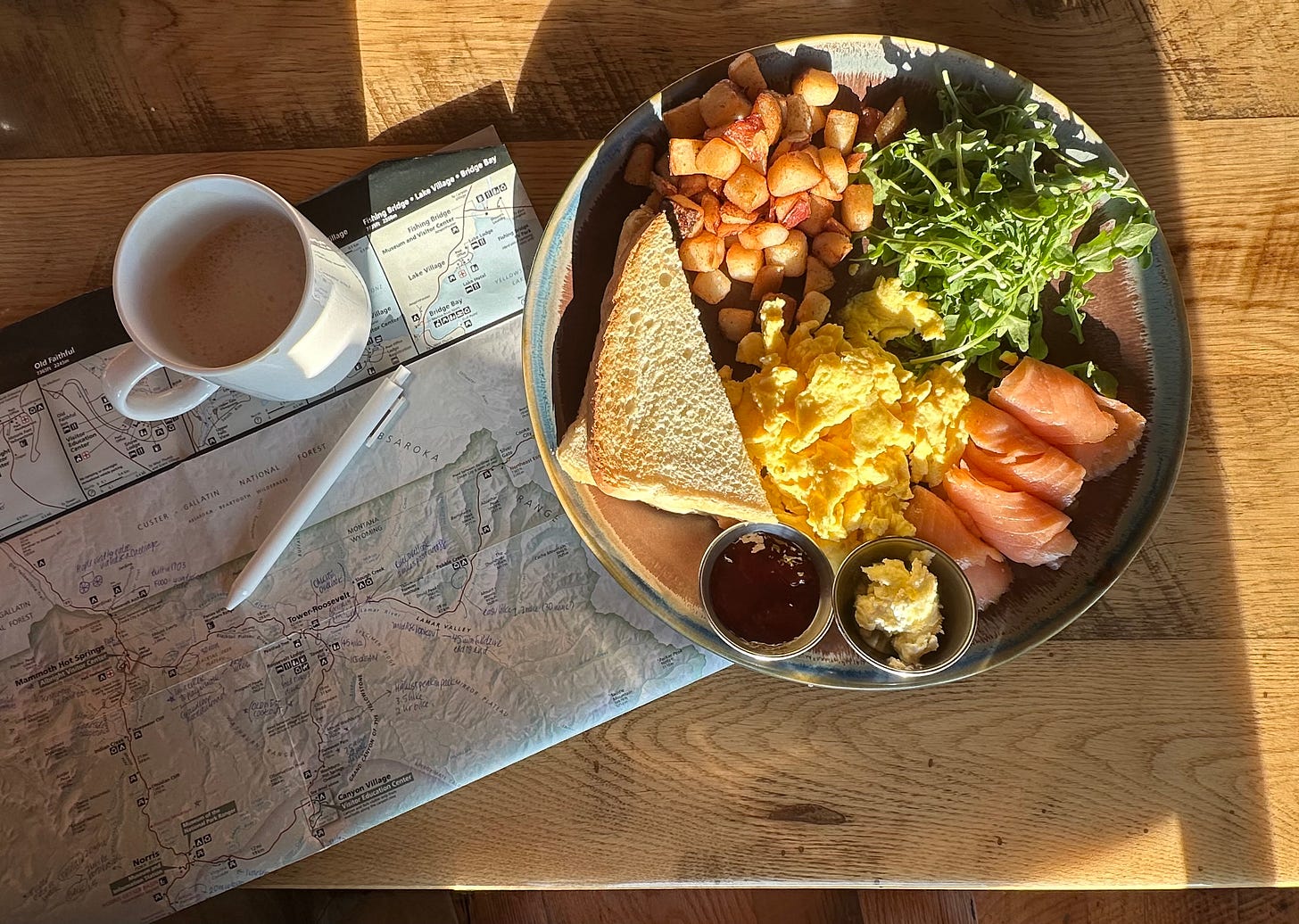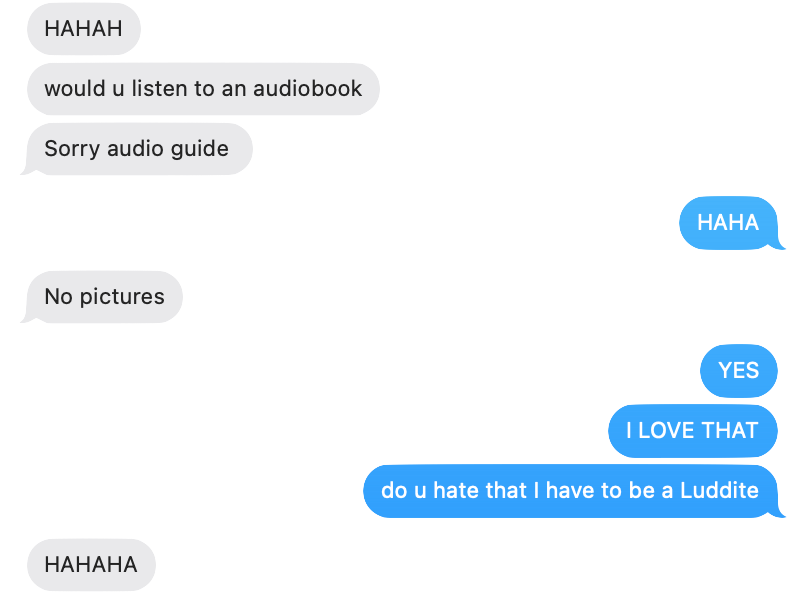How I raw-dogged vacation
No Google Maps, no reading reviews, no research. Just vibes.
I went on a roadtrip in Wyoming with no plan, no research, and no internet.
The idea came to me when I saw a TikTok captioned: “POV you show up to Mormon Row and realize you have the same Pinterest board as every other girlie.” The TikTok featured girls wearing the same white poplin skirt and cowboy hat, ring light in hand, each taking the same photo in front of Wyoming’s famous Mormon Row.
When I bought my ticket to Wyoming on a whim a few months back, that was the only image I saw. Did I want to take the same picture? Perhaps. I may or may not be listing my white poplin skirt on Depop right now.
I decided then —because I don’t know what to expect of the trip— I might as well go in blind. I want to experience Wyoming’s landmarks physically first, not compare what’s before me with what I had previously seen on screen.
This is “Cyber Celibate,” a series where I give up a piece of tech each month for its more archaic counterpart — veganism for tech, sort of.
What I gave up: Google Maps, online reviews, TikTok recommendations
How did I cope: Printed maps and word of mouth
Did it suck: It was fabulous
A while ago, Kyle Chayka’s
explained how travel destinations have become trends. Last year it was the Dolomites, the year before it was the French Riviera. But it’s not just the destination that’s fashionable. There’s also an exhaustive list of specific, viral spots you must visit for your trip to be worth it — the chocolate mousse from Chez Janou in Paris, Casa Estudio Luis Barragán in Mexico City, the Shibuya crossing in Tokyo. In place of historical monuments and natural wonders, we now have Instagram-able cafes. Trips have become checklists of photo-ops. It shouldn’t be surprising that we’re seeing different iterations of the same carousel on our feeds.Posting what is clearly a cookie-cutter photo seems cringe, but how else do I show the world I’m well travelled? There are only so many angles of the Eiffel tower. In my own idiosyncratic way, I thought: I can justify posting these photos if I didn’t know these spots are trendy.
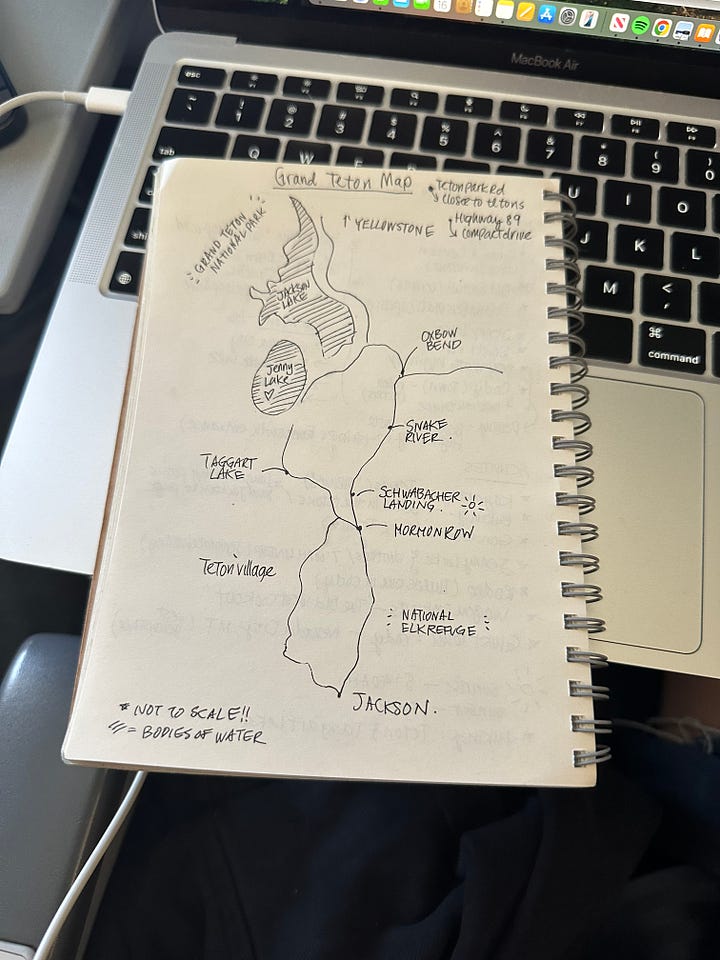
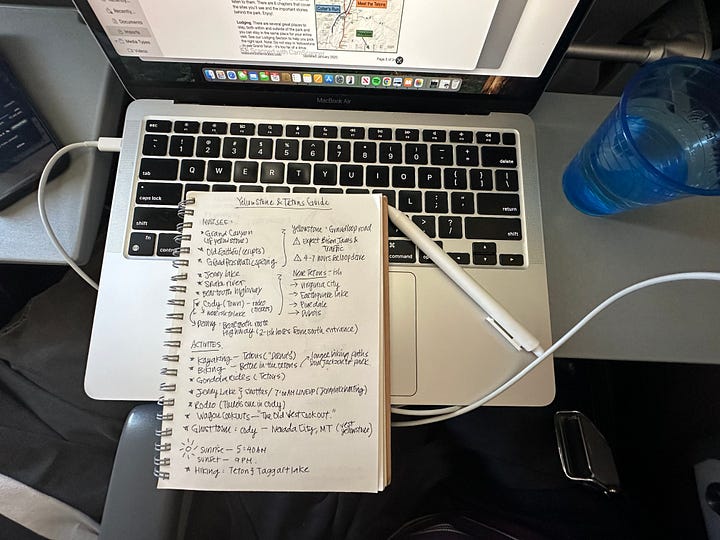
So I decided that quitting the internet was the answer
Okay yes, forgoing the internet in a National Park is kind of a cop out. I was going to lose service anyway.
To allow myself some structure for this trip, I annotated the printed map that came with the park entrance fee. The map didn’t have any pictures — its best feature was how a fan-favorite lake and a shitty picnic spot were listed the same way. Obviously, I decided where to go depending on how funny the names were (Bacon Ridge and Delusion Lake were among my favorites). The fact that Yellowstone National Park is one large loop also helped. All I had to do was follow the signs.
In service of experiencing something for the first time
Without the internet, I wasn’t be able to develop expectations. I couldn’t figure out how I should feel about a specific spot by reading about other people’s experiences, no matter how funny the reviews of natural phenomenons are.
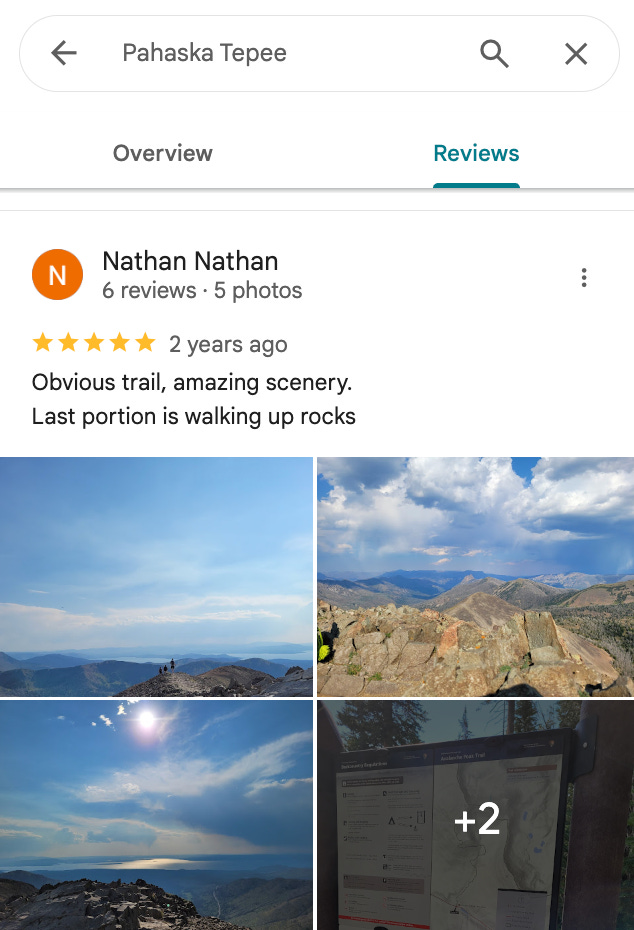
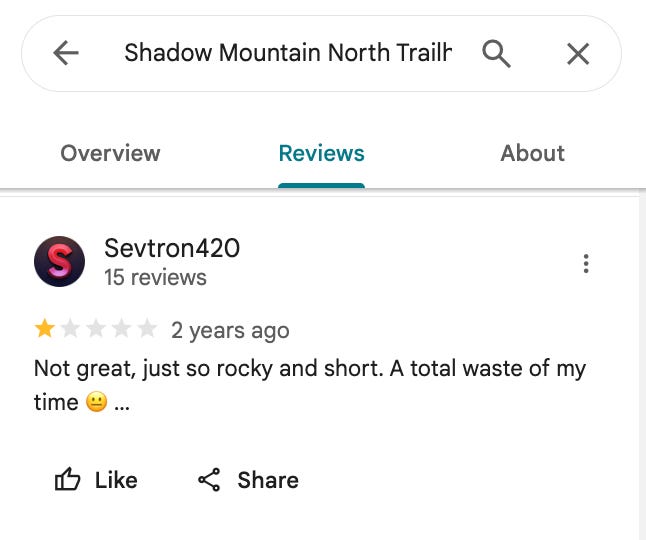
When I reached the end of a long hike, I was always surprised. I couldn’t compare it to other hikes I might go on later that day — I had no idea if this hike is better than the next or if it could look more picturesque at a different time of day. There wasn’t an optimal version of this experience I was holding onto, simply because I didn’t know. I was free to experience these sights for the first time, in the purest sense.

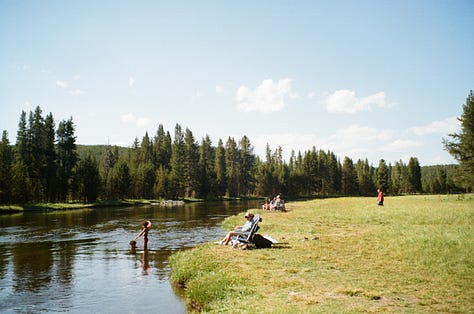
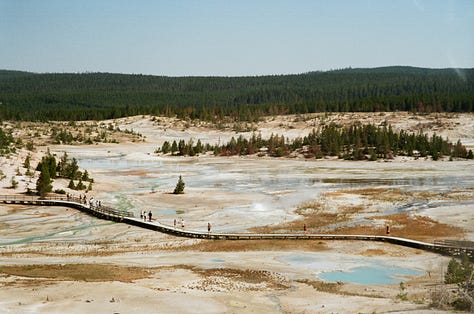
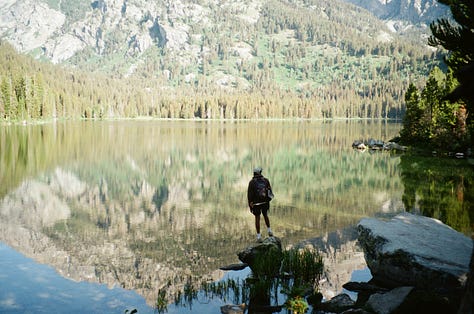
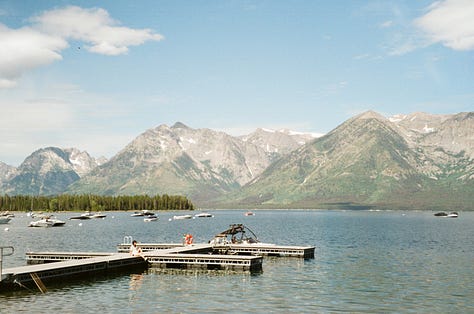
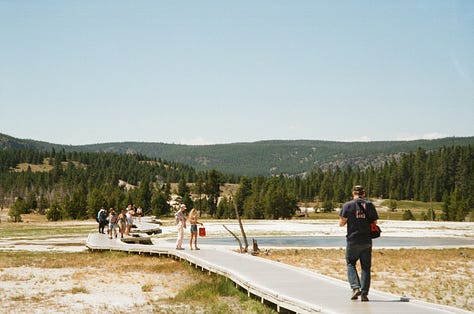
In 1872, congress acquired a painting of The Grand Canyon of Yellowstone by Thomas Moran for $10,000 (a notable figure even today, I know).
Taking vacation photos
Byung Chul Han’s most recent book The Crsis of Narration denounces our obsession with excessive documentation. He compares the isolating character of photographs to the timelessness of narrative memory.
“Photographs are distinguished from memory images by their lack of narrative inwardness. Photographs represent what is there without internalizing it. They do not mean anything… Unlike photography, memory is decidedly arbitrary and incomplete. It expands or contracts temporal distances. It leaves out years or decades. Narrativity is opposed to logical facticity.”
Since going on holiday has devolved into an exercise of collecting trending images that make up a familiar carousel to anoint the real-ness of your trip, vacation photos are no better than factoids when it comes to constructing a narrative — what Han insists is key to capturing memory. Han has a point. When was the last time I checked my camera roll? Do any of my images make any sense together?
Somehow, this soundbite from Emma Chamberlain’s podcast came to mind. She talks about taking pictures as a way to preserve memories we fear losing. The smooth motion of swiping left on my iPhone to snap a picture has become a tick, a reaction to that fear.
After a 2-mile hike up a deceivingly small mountain, I reached a lookout point where I overheard a woman go: “I just took the same photo as a thousand other people,” as she haphazardly snapped a photo of the Geyser we all hiked up to see. She’s right. It somehow feels wrong to not capture the moment with a photograph, but it’s also questionable whether that image would 1) see the light of day, 2) be at all legible. Makes me think about this scene in Walter Mitty.
In Asia, my favorite phenomenon is the market of tourist photoshoot: Human “drone” photography in the Philippines, Phuket’s lily pad photoshoot cafe, etc. They’re full on productions. I guess it’s not contrived when you full send it.
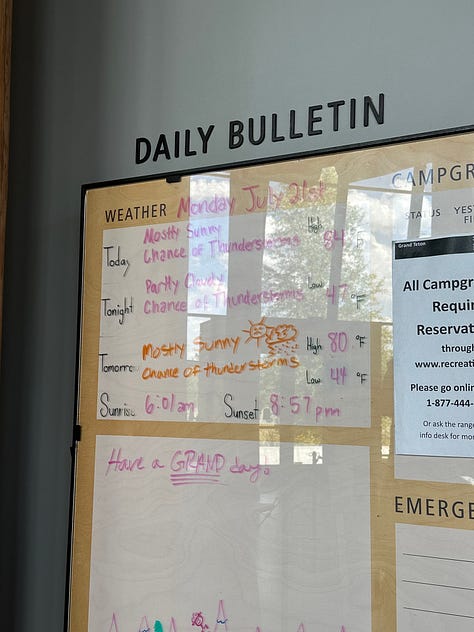
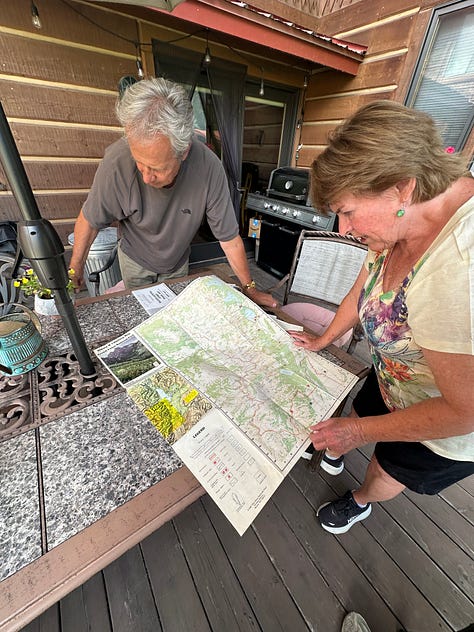
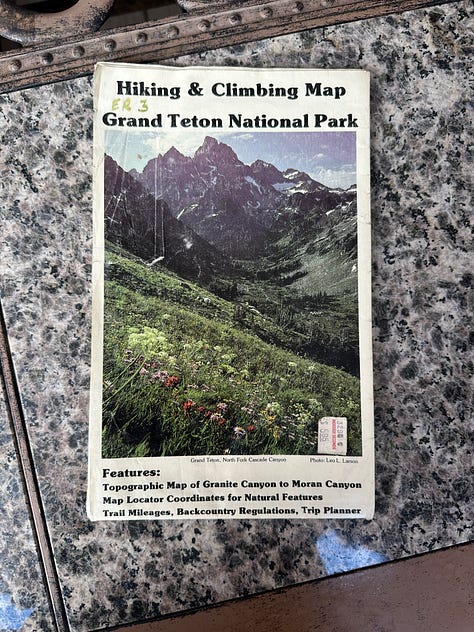
Bring back travel books
I should clarify that forgoing the internet didn’t also mean abstaining from travel guides. I just needed to make sure the guide wasn’t optimized for Instagram-ability — I didn’t want something that was crowd-sourced. Oh! The tyranny of the majority!
I’ve never actually purchased a physical travel guide. Mostly because they become outdated so quickly. But I came across a guide written by Matt and Cheryl, a couple in Utah who’ve spent their lives national park hopping. Their guide felt personal and it was updatd annually. Matt and Cheryl’s guide was curated not for it’s potential to go viral, but to capture their subjective views on why some hikes are better than others.
Too often do I come across TikTok recommendations or Buzzfeed-style listicles that claim to know the objectively best places to go. I’ve never stopped to ask: why would someone like this? Why not? All questions Matt and Cheryl’s audio guides answered.
The real MVP of this trip was my boyfriend — who had to drive without Google Maps and go along with this whole exercise.
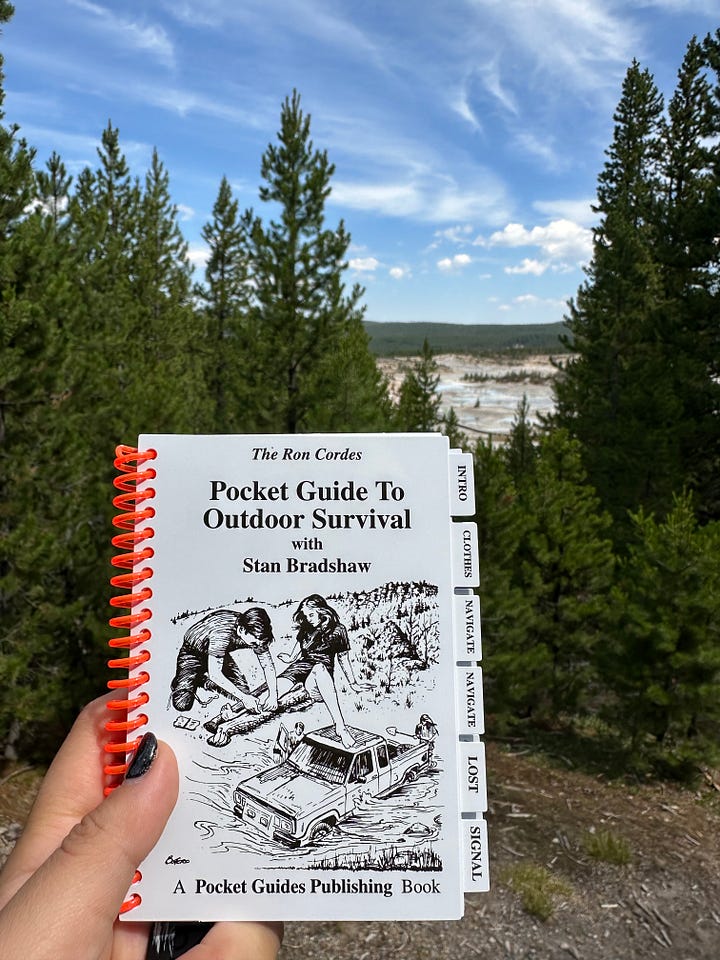

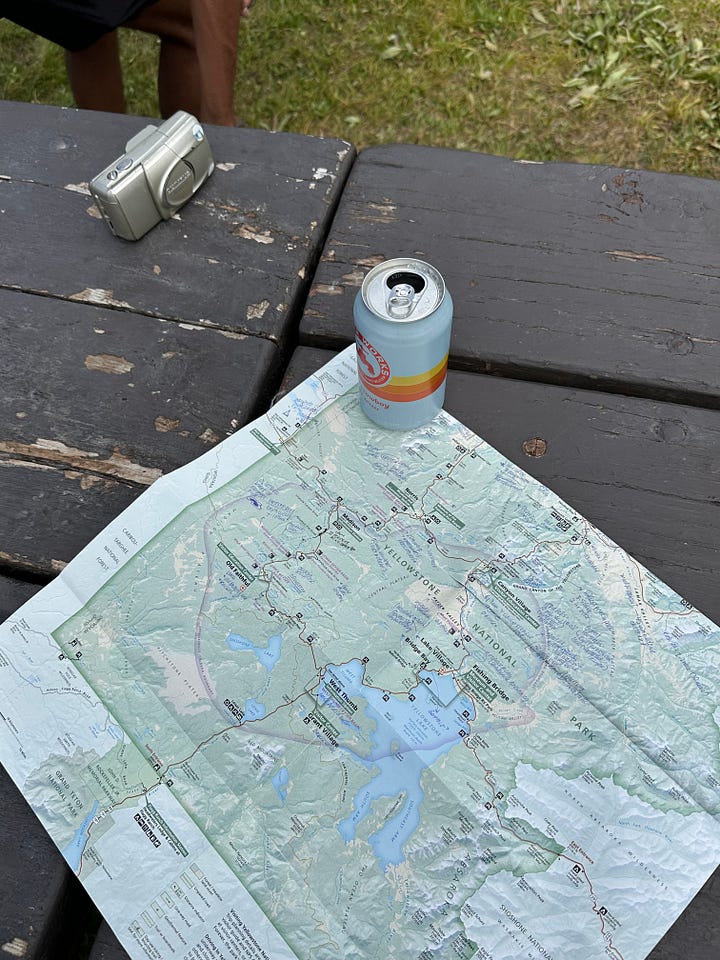

Would I do this again? Absolutely.
With the absence of internet, I was free. I didn’t feel like I was or wasn’t optimizing my trip. I was simply there, experiencing the grandeur of nature as is. Granted, there were a few wrong turns and a too-close-for-comfort incident with an empty tank. Nonetheless, it was lovely, much like living a Lumineers song.




